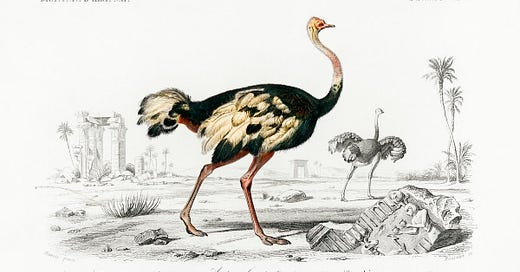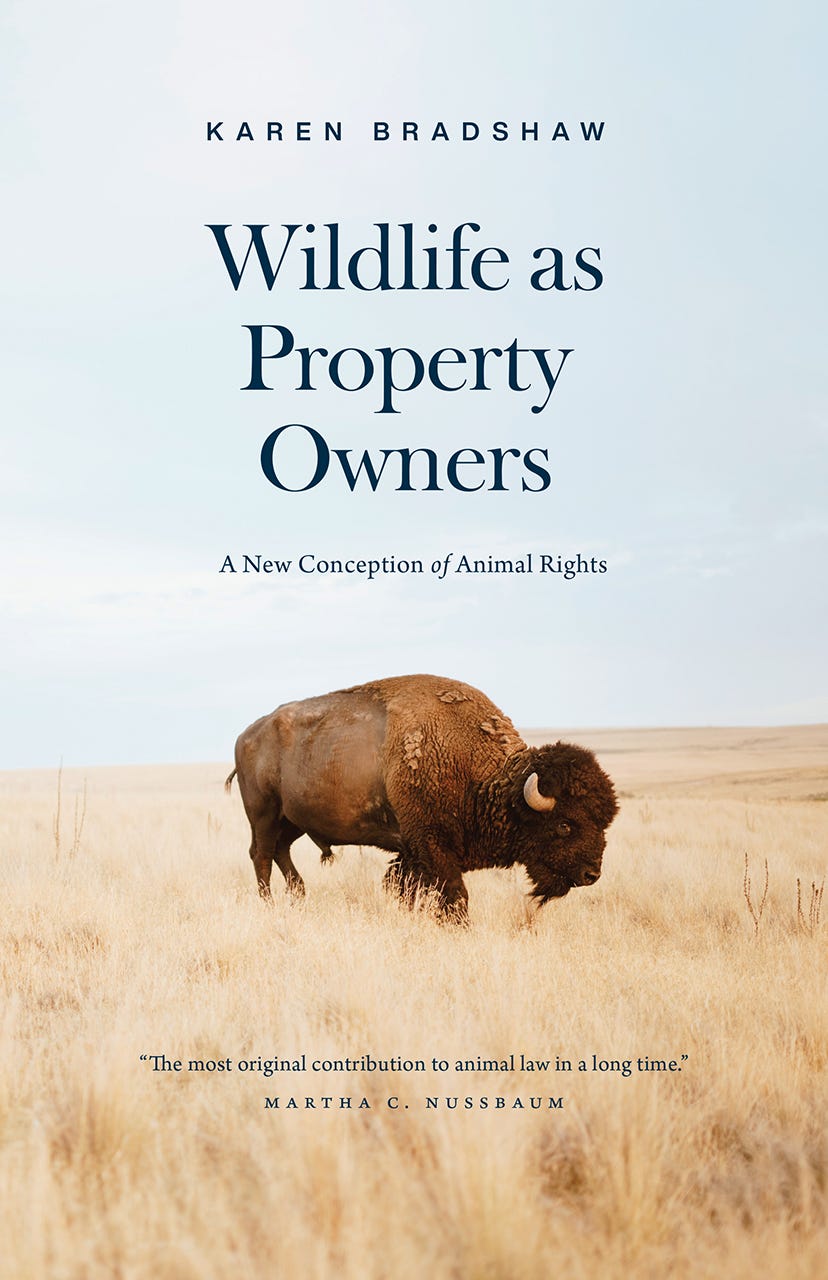🌱Fieldnotes in Environmental Communication
Wildlife as property owners + Song for Gathering Mushrooms + Bidder 70 + How to Save a Planet + Feral Atlas and more...

Hi everyone, welcome back to Wild Ones, a bi-weekly digest by me, Gavin Lamb, about news, ideas, research, and tips in environmental communication. If you’re new, welcome! You can read more about why I started Wild Ones here. Sign up here to get these digests in your inbox:
📚 What I’m reading
Wildlife as Property Owners by Karen Bradshaw
By Karen Bradshaw, Professor of Law at Arizona State University. Her legal research covers a range of environmental topics, including wildfire law, animal property rights, food sustainability, stakeholder collaborations, endangered species conservation, and more.
Her new book, Wildlife as Property Owners introduces the idea of ‘anthropocentric property’ as “a key driver of biodiversity loss, a silent killer of species worldwide”:
“Humankind coexists with every other living thing. People drink the same water, breathe the same air, and share the same land as other animals. Yet, property law reflects a general assumption that only people can own land. The effects of this presumption are disastrous for wildlife and humans alike….Wildlife as Property Owners advocates for folding animals into our existing system of property law, giving them the opportunity to own land just as humans do—to the betterment of all.”
🎧 What I’m listening to
“Song for Gathering Mushrooms”
I first heard about this song reading Merlin Sheldrake’s new book, Entangled Life: How Fungi Make Our Worlds, Change Our Minds & Shape Our Futures. In the excerpt below, Sheldrake writes about how the ‘musical polyphony’ of the women’s singing in the forest as a metaphor for understanding how a larger story (or form) emerges from many individual stories. He says,
The song “is an example of musical polyphony. Polyphony is singing more than one part, or telling more than one story, at the same time. Unlike the harmonies in a barbershop quartet, the voices of the women never weld into a unified front. No voice surrenders its individual identity. Nor does any one voice steal the show. There is no front woman, no soloist, no leader. If the recording was played to ten people and they were asked to sing the tune back, each would sing something different…Whenever I listen to “Women Gathering Mushrooms,” my ears find their way into the music by choosing a single voice and riding with it, as if I were in the forest and could walk up to one of the women and stand next to her.”
I’m also listening to the new episode of How to Save a Planet: How Much Does the President Matter for the Climate?: “When it comes to climate change, it can feel like our future hangs in the balance of this presidential election in the U.S. But how much does the president really matter? And how can climate action move forward regardless of who wins?”
👀 What I’m watching
A few months ago, I finished reading The Ecocentrists: A History of Radical Environmentalism, by Keith Makoto Woodhouse (2018). It’s a fascinating history of the radical environmental movement in the U.S. I recommend it if you’re interested in the decades-long history of debate in the environmental movement around what effective environmental communication & advocacy should (and shouldn’t) look like.
In the conclusion of the book, Woodhouse introduces us to a University of Utah student named Tim DeChristopher. “In December 2008, the outgoing Bush administration held an auction [at a federal building] in Salt Lake City for oil and gas drilling rights on thousands of acres of public land in the West[ern United States].” Woodhouse continues,
“Tim DeChristopher entered the federal building with a vague plan to deliver an impromptu speech about fossil fuels and climate change. Someone asked him if he was there to bid, and he quickly responded that he was. Soon DeChristopher had won drill-ing rights worth nearly two million dollars on twenty-two thousand acres of land. Bureau of Land Management officials abruptly ended the auction and interrogated DeChristopher, who admitted that he had placed bids only to interfere with an auction that he believed threatened the planet.”
A judge sentenced DeChristopher to nearly two years in prison. However, Woodhouse writes, “An environmental movement evermore focused on climate change embraced DeChristopher’s actions and the urgency behind them, and in 2013 he emerged from prison a hero to many organizations and activists.”
In 2013, after DeChristopher was released from prison, he did this memorable interview with the journalist Bill Moyers:
🔍 Eco-Communication Tool I’m exploring
I’m still figuring out what this is all about. It’s a form of environmental communication unlike anything I’ve seen before, so looking forward to exploring it more. Here’s a description:
“Feral Atlas is an interactive, web-based experiment in environmental storytelling. Conceived and curated by Anna Tsing, Jennifer Deger, Alder Keleman-Saxana and Feifei Zhou, Feral Atlas combines art, science and humanities perspectives to reveal the un-designed effects of human infrastructure projects. At the heart of the site will be a series of reports by researchers on particular “feral” ecologies, that is, ecologies that have been encouraged by human infrastructures, but which develop and spread beyond human control. Feral Atlas argues that, taken together, these field-based observations offer a description of the more-than-human Anthropocene."
💬 Quote I’m thinking about
"What I’m trying to say is that most of the time, I am overwhelmed by the feebleness of language. Some current experts suggest that we lose a species every five minutes. Earthday.org estimates that, at our present rate of extinction, each year between 10,000 and 50,000 species will disappear from the planet forever. Trying to find a way to speak to all these losses feels like walking around a denuded arboretum disappointed in myself—and a little panicked—for not being able to picture the trees in full leaf."
– Camille T. Dungy, in her essay, “Losing Language”




